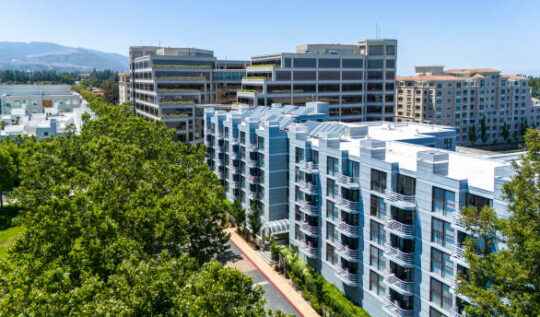Los Angeles Housing Shortage Solutions: Why Incremental Rezoning Won’t Fix the Crisis
Los Angeles is running out of room to grow. The city cannot sprawl into the ocean, mountains, or desert. Yet millions still want to live here, and housing costs climb higher every year. State leaders have ordered Los Angeles to plan for nearly half a million new homes by 2029.
The city’s answer is a rezoning plan, but it leaves most single-family neighborhoods untouched. The result is a half-measure in a city that needs bold action.
A Plan That Falls Short
Los Angeles has drafted a rezoning plan to meet state mandates. California requires the city to prepare for 450,000 new homes by 2029. The city’s plan allows some multifamily housing but avoids single-family areas.
The problem is clear: this approach cannot deliver enough homes. Even with optimistic assumptions, Los Angeles will miss its housing goals. Protecting single-family neighborhoods leaves little room for growth.
The Power of Single-Family Zoning
About 72% of residential land in Los Angeles allows only single-family homes. This zoning drives up costs, limits supply, and blocks new options.
Opening these areas to duplexes, triplexes, and other small-scale housing could triple the city’s housing potential. Without change, supply will stay tight and affordability will worsen.
Divided Communities
Homeowners want stability and fear change. They argue that rezoning will strain schools, streets, and utilities. Many say density will change the character of their neighborhoods.
On the other side, builders and renters are frustrated by delays. LADWP assignments, fire department reviews, and overlapping rules slow projects for months. Even when zoning allows housing, permits are stuck in the system.
Construction Challenges
Even with stronger zoning, hitting 450,000 homes by 2029 will be hard. Costs are high, labor is limited, and financing is tight. Zoning reform is only part of the answer.
To succeed, Los Angeles must also cut delays, reduce costs, and offer stronger incentives for both public and private projects.
Reform Proposals
Experts suggest bigger steps:
Legalize duplexes, triplexes, and fourplexes citywide.
Streamline approvals with fewer appeals.
Cut parking minimums to lower costs.
Adjust wage rules that block smaller multifamily projects.
Revisit preservation rules that limit housing.
Other ideas include expanding bungalow courts, courtyard apartments, and ADUs. These “missing middle” homes offer density without high-rises.
The Risk of Inaction
If Los Angeles fails to zone for enough homes, the state can step in. The California Department of Housing and Community Development (HCD) may decertify the city’s plan. That would trigger the builder’s remedy, letting developers bypass local zoning rules.
If city leaders resist bold action, voters may push reform through a ballot measure instead.
Estimate Additional Homes If Single-Family Zoning Opened Up
What Reform Should LA Prioritize?
Takeaway: Time for Bold Action
Los Angeles is moving, but not fast enough. Protecting single-family zoning will keep housing scarce and prices high.
For developers and investors, this means chances will cluster in limited areas. Still, the long-term path is clear: density will grow. Those who understand zoning, permitting, and politics will be ready to lead.
At JDJ Consulting Group, we help clients take advantage of these shifts. From zoning strategy to permit expediting, we clear paths through Los Angeles’ complex system. For builders and investors, the time to plan is now.
Frequently Asked Questions
Understanding the Scale of the Crisis
▶
▼
What is “incremental rezoning” and why is it considered insufficient?
Incremental rezoning refers to modest or piecemeal changes—opening up small parts of single-family zones or selective multifamily rezoning—rather than broad, citywide reform. The article argues this is insufficient because Los Angeles currently excludes single-family neighborhoods (about 72% of residential land) from densification. Incremental changes leave large swaths untouched, limiting the total housing supply, so the city is likely to miss its mandated housing goals without more comprehensive action.
▶
▼
What housing targets must Los Angeles meet and by when?
LA has been ordered by state authorities to plan for about 450,000 new homes by 2029. The state requires cities to prepare adequate zoning, infrastructure, and policies to accommodate growth. The article suggests that with current plans—especially those that avoid rezoning single-family areas—Los Angeles will fall short of meeting this target.
▶
▼
How much of Los Angeles is zoned exclusively for single-family homes?
Approximately 72% of residential land in Los Angeles is restricted to single-family (one home per lot) zoning. This policy greatly limits where higher density housing (e.g. duplexes, triplexes, fourplexes) can be built. Because single-family zones make up so much of the city, avoiding changes there means greatly limiting the potential for increasing overall housing stock.
Effects and Consequences
▶
▼
How does single-family zoning drive up housing costs and limit supply?
When most of the city’s residential land allows only single-family homes, housing supply becomes constrained. Demand outpaces what can be built, especially in desirable areas. Limited supply increases property and rental prices. Also, there are fewer options for smaller, more affordable housing units. Without opening up more land for denser housing, affordability continues to worsen for many residents.
▶
▼
What are some barriers beyond zoning that affect housing delivery?
Even where zoning permits multifamily housing, other obstacles slow or block development. These include:
- Lengthy permit, review, and appeal processes (e.g. fire department, utilities)
- High costs of construction materials, financing, and labor shortages
- Excessive parking minimums and wage or labor rules that raise costs
- Preservation and historic rules that restrict redevelopment
Proposed Reforms for Meaningful Impact
▶
▼
What reforms does the article suggest to meaningfully increase housing supply?
The article outlines several bold reforms that could significantly expand housing production:
- Legalizing duplexes, triplexes, fourplexes citywide
- Streamlining approval processes and reducing or eliminating appeals
- Cutting parking minimums to lower development costs
- Adjusting wage and labor rules that hinder small multi-unit projects
- Revisiting preservation or historic rules that block redevelopment
▶
▼
How can “missing middle” housing help in the context of LA?
“Missing middle” housing refers to smaller scale multi-unit housing (e.g. duplexes, courtyard apartments, bungalow courts) that fits between single-family homes and large apartment blocks. These can add much-needed density without dramatically altering neighborhood character. The article argues that enabling missing middle housing citywide (including in single-family areas) is crucial to meeting housing targets and improving affordability.
Risks, Stakes, and the Cost of Doing Nothing
▶
▼
What happens if Los Angeles fails to enact bold rezoning or reforms?
If LA fails to adjust its zoning and related policies sufficiently:
- The city may not meet the 450,000 homes target by 2029
- The state could decertify LA’s housing plan, triggering the “builder’s remedy” allowing developers to bypass local zoning rules
- Housing affordability will worsen, pushing more people into longer commutes or less desirable areas
- Public pressure or ballot measures may force changes, often in contentious ways
▶
▼
What is the “builder’s remedy” and why is it significant?
The builder’s remedy is a state-level enforcement tool that can allow developers to build more housing even if local zoning resists, so long as the city has failed to meet housing planning obligations. If LA’s rezoning plans are decertified by the state, developers may bypass certain local zoning restrictions under this remedy. It represents a risk for the city of losing control over how and where development occurs.
Implications for Developers, Policy, and Strategy
▶
▼
Where will opportunity concentrate if single-family zones remain largely protected?
If single-family zones stay off the rezoning table, development will likely cluster in:
- Areas already zoned for higher density or multifamily
- Transit corridors and neighborhoods near public transit
- Underutilized or industrial land ripe for conversion
- Projects that can take advantage of existing incentives or smaller lot opportunities
This clustering may lead to uneven development and affordability burdens in certain neighborhoods.
▶
▼
What strategic steps should developers take in response to these zoning and policy dynamics?
Developers should consider:
- Focusing on infill sites or areas already zoned for higher density where approvals are more likely
- Building small-scale multi-unit housing where permissible (ADUs, duplexes)
- Navigating zoning incentives (density bonuses, reduced parking) to make projects financially viable
- Staying informed on state laws and potential regulatory changes
▶
▼
How can cities balance growth with preserving neighborhood character?
Balancing growth with neighborhood character involves smart design, community input, and thoughtful zoning reforms. Key strategies include:
- Encouraging “missing middle” housing that fits scale and aesthetics
- Maintaining design standards and landscaping rules that preserve local feel
- Including community engagement early to build support
- Ensuring infrastructure and services (streets, schools, utilities) keep pace with growth





